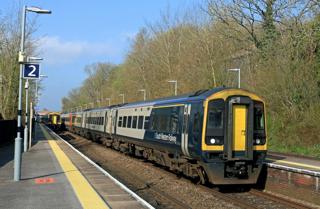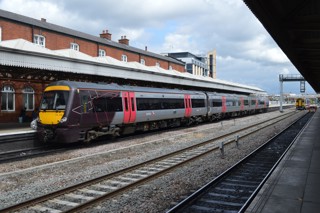
London St. Pancras Highspeed, the newly branded name for HS1 Ltd, has unveiled an initiative designed to enhance international rail travel between the UK and Europe.

London St. Pancras Highspeed, the newly branded name for HS1 Ltd, has unveiled an initiative designed to enhance international rail travel between the UK and Europe.
The International Growth Incentive Scheme aims to encourage both new and existing train operators to expand services, introduce new destinations, and boost passenger numbers.
The scheme will provide substantial financial incentives to train operators which qualify, offering discounts of up to 50% in the first year, 40% in the second, and 30% in the third on the Investment Recovery Charge (IRC), a fee required to run services on the high-speed line. Additionally, operators will receive financial rewards for increasing passenger volumes. Currently, the high-speed railway, running from London St. Pancras to the Channel Tunnel in Folkestone, operates at only 50% capacity.
London St Pancras Highspeed says that by maximising international services will boost capacity and increase passenger choice. Eurostar said that it was going to be looking at the proposals closely as it battles to keep sole access to the tunnel for passenger services but welcomed the plan.
In a statement, it said: “With a new fleet of 50 trains coming for customers and bold ambitions to grow to 30 million passengers, Eurostar welcomes any incentives which enable more sustainable international travel and support our plans to run more services. Our ambitions are why we’re also investing in key international stations like St Pancras and the Temple Mills depot to create more space. We will now study the draft in detail and take part in HS1’s consultation on growing cross-channel rail.”
This initiative aligns with broader plans to more than double international passenger capacity at St. Pancras station to nearly 5,000 passengers per hour over the next decade.
Robert Sinclair, CEO of London St. Pancras Highspeed, emphasised the environmental and economic benefits of the scheme, stating: “The International Growth Incentive Scheme is an innovative and groundbreaking proposal designed to boost international rail travel with more services to more destinations in Europe.
Sinclair also highlighted the environmental advantages of high-speed rail, noting that rail travel can cut carbon emissions by up to 96% compared with air travel.
He added that it could also incentivise operators to invest in new rolling stock.
“We are enabling operators to expand their services, increase the network of destinations they serve, and invest in new rolling stock.”
Reacting to new scheme Adrian Quine, CEO of Gemini Trains said: “We have spent 2 years developing a very robust business plan prior to today’s announcement. This will further strengthen our plan for competitively priced fares, attracting more people to make the shift from road and air to rail. We are now seriously assessing whether this scheme will enable us to offer additional new and exciting routes.”
Virgin Group which recently said that the decision on capacity at Temple Mills depot in East London was the “last hurdle to overcome” added that it was now “full steam ahead”.
A spokesperson for the company said: “Today’s announcement means Virgin can further accelerate its plans, which is great news for consumers on both sides of the Channel as they will finally get the choice and breadth of service they deserve. Virgin looks forward to sharing its plans in more detail in due course.”
The proposed International Growth Incentive Scheme has been published for consultation with train operators and the Office of Rail and Road (ORR).
Pending the outcome of the consultation, the scheme is set to launch on May 30.
Login to continue reading
Or register with RAIL to keep up-to-date with the latest news, insight and opinion.


















Duncan Wilson - 04/04/2025 19:13
London to Paris and Brussels is already very well served by Eurostar. What we need are services from London to destinations such as Frankfurt, Berlin, Rome, Venice, Vienna, Geneva, Marseille, Barcelona, Madrid, Munich, Naples, Nice, and Bordeaux, along with overnight sleeper services.